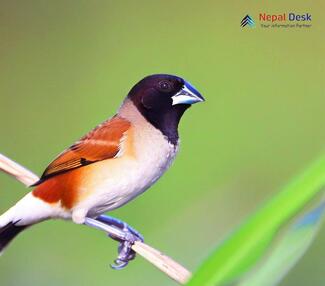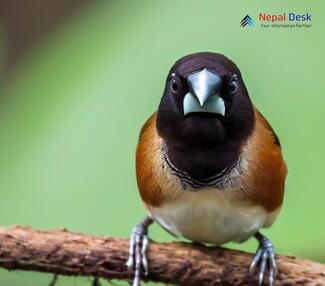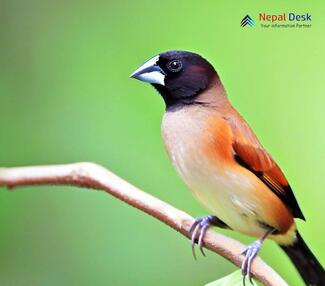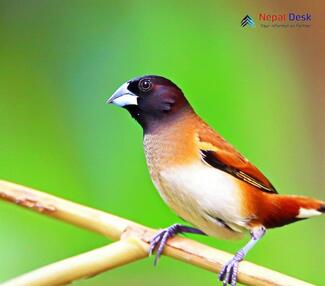The Black-headed Munia, also known as Lonchura malacca, is a fascinating and captivating bird species native to Nepal and other parts of Asia. With its distinct appearance and unique habits, it has become a popular subject of interest for birdwatchers and nature enthusiasts alike. In this blog post, we will delve into the fascinating world of the Black-headed Munia, exploring its habitat, interesting facts, and how you can spot them in Nepal.
Distinctive Features of the Black-headed Munia
The Black-headed Munia is a small passerine bird, measuring around 10-12 centimeters in length. True to its name, this species features striking black or dark brown plumage on its head and chest. The rest of its body is predominantly chestnut-colored with patchy white underparts. Their short yet strong beak is perfect for their seed-based diet. Characterized by their melodious songs and rapid flight patterns, Black-headed Munias are a delight to observe in the wild.
Habitat and Distribution in Nepal
The Black-headed Munia is primarily found residing in grasslands, marshes, agricultural fields, and open areas near fresh or brackish water sources. They tend to avoid dense forests and are more often spotted at altitudes below 1500 meters above sea level. In Nepal specifically, they are commonly found within the Terai region – the lowland plains situated between the Himalayas and India.
Fascinating Facts about Black-headed Munia
As primarily social creatures, Black-headed Munias are often observed in flocks that may consist of up to 100 individuals. These cohesive groups roost and feed together – making them an incredible sight for birdwatchers.
During their breeding season from June to September, they build intricate dome-shaped nests using grass or other plant materials. Interestingly, both males and females participate in the nest-building process, and they may even incorporate the nests of other bird species.
The diet of Black-headed Munias predominantly consists of seeds, including those grasses and rice. They typically forage for food on the ground or at low levels of vegetation, deftly plucking seeds with their specially adapted bills.
Spotting the Black-headed Munia in Nepal
To increase your chances of spotting the Black-headed Munia during your visit to Nepal, start by familiarizing yourself with their preferred habitats and behaviors. The Terai region would be an ideal starting point in your search. Early mornings and late afternoons are prime birdwatching times when these birds are most active.
Being mindful of local customs, seasons, and guidelines while responsibly exploring Nepal's diverse natural landscapes will enhance your experience and likelihood of encountering this remarkable species.
In conclusion, the Black-headed Munia (Lonchura malacca) is an enigmatic bird species that piques the curiosity of bird lovers worldwide. By understanding their natural history, habitats, and distinctive features, you can appreciate these magnificent creatures better – whether you're in Nepal or elsewhere within their distribution range. Don't miss out on the opportunity to observe and appreciate these avian wonders in their natural habitat!




